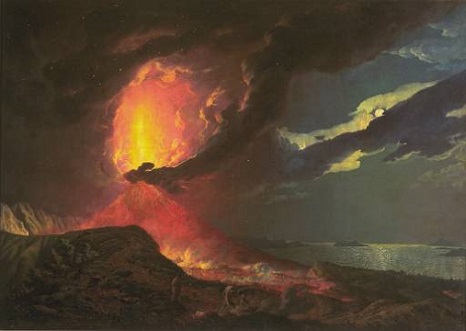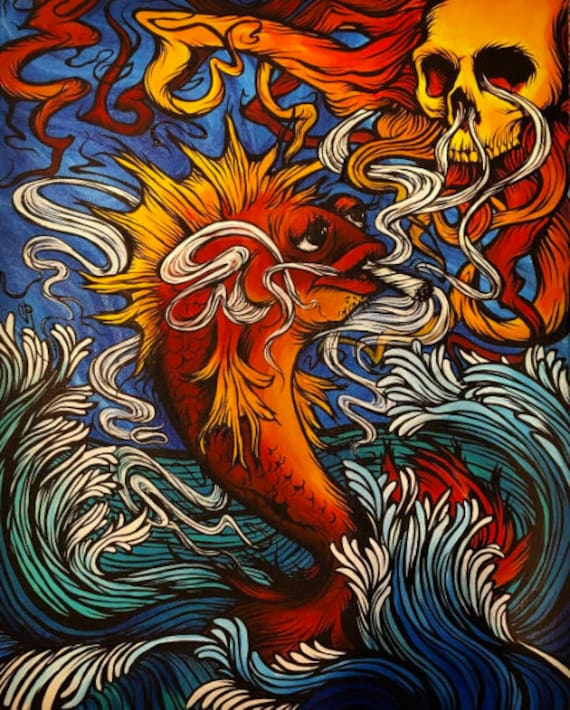


It might be pointed out that here Burke completely ignores God’s goodness and love. Burke writes, “In the Scripture, wherever God is represented as appearing or speaking, everything terrible in nature is called up to heighten the awe and solemnity of the Divine presence.” God is also sublime, at least when we just stand in awe of His power, and we don’t create an abstract rational picture of His various attributes. Even the wild ass, in the book of Job, is sublime due to its freedom and defiance. The perfect combination consists of untamed strength and liberty. Similarly, some animals are more sublime than others. We are therefore in awe of dangerous and powerful things that can cause us pain. For Burke, power is sublime, especially when it is unpredictable and dangerous.īurke suggests that whereas pleasure has little to do with power, “pain is always inflicted by a power in some way superior” (55). PowerĪlthough Burke is greatly influenced by John Locke, sometimes you wonder whether he has also read Thomas Hobbes. Burke quotes from Milton’s portrait of Satan, who is described with a “crowd of great and confused images.” In addition, Satan’s original glory is now obscured (“th’ excess / Of glory obscured”) so that he looks like the sun shining through misty air. Words are more likely to be obscure than paintings, which provide more clarity.Ĭoncepts like eternity and infinity are likewise obscure to us, and are hard to fathom. Burke writes, “In this description all is dark, uncertain, confused, terrible, and sublime to the last degree.” Burke is particularly impressed by Milton’s description of Death, who is formless, obscure, and terrifying.

It is also why despotic government try keep their ruler away from the public view. This is why ancient religions kept their temples dark. Things that are dark and mysterious are naturally sublime. Clearly, astonishment and fear are connected. The ocean’s hidden depths are also sublime, or at least more impressive than an open plain.īurke notes that the word astonishment is derived from the Latin attonitus, which originally meant thunder-struck. Some animals (e.g., tigers and lions) are naturally sublime. Terror and FearĪs long as we’re not in immediate danger of death or injury, we can find frightening experiences sublime.

Rather than just list them all, we’ve provided some explanatory notes, especially for the most important ones. The Causes of the Sublimeīurke describes many causes of the sublime. In this lesson we’ll review the main causes of the sublime and show how Burke might analyze a specific work of art. We cannot reason properly.īurke adds that the minor subcategories of astonishment are admiration, reverence, and respect. This is “that state of the soul, in which all its motions are suspended, with some degree of horror.”Īt such times our mind is so filled with the object that we can’t think of anything else. The sublime causes the passion known as astonishment. It’s a feeling of transport and transcendence, as you forget about your surroundings and are caught up in the moment.įor Burke, the best word to describe the sublime is astonishment: It’s that spine-tingling feeling you get when you stand at the edge of a cliff. It is a mixture of fear and excitement, terror and and awe. art) for eliciting the sublime.Edmund Burke argued that the sublime is the most powerful aesthetic experience. This study compares different sublime stimuli (nature vs. The nature-based format induced higher intensity emotional responses than the art-based format. We measured participants' emotional responses before and after each exposure, as well as the sense of presence. We compared Vincent Van Gogh's The Starry Night with a photorealistic version of the actual place depicted in the painting, Saint-Rémy-de-Provence. In order to experimentally compare nature and art, we exposed 50 participants to sublimity-inducing content in two different formats (nature-based and art-based) using 360° videos. However, it has not yet been empirically demonstrated whether two major elicitors of the sublime-nature and art-differ in inducing this state. Recently, psychology has conceived of the sublime as an emotion, often referred to as awe, arising from natural or artistic stimuli that are great, rare, and/or vast. One of the major philosophical issues concerns whether the sublime is best thought of as a subjective response or as a stimulus. The sublime-the mixed aesthetic experience of uplift and elevation in response to a powerful or vast object that otherwise is experienced as menacing-has nurtured philosophical discourse for centuries.


 0 kommentar(er)
0 kommentar(er)
